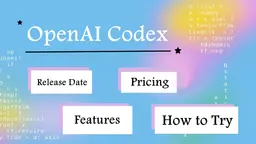Stable Diffusion 3 Introduction
Stable Diffusion 3 is Stability AI's most advanced text-to-image model, offering improved multi-subject handling, image quality, and text generation capabilities.
View MoreWhat is Stable Diffusion 3
Stable Diffusion 3 is the latest iteration of Stability AI's text-to-image generation model, announced in February 2024. It represents a significant advancement over previous versions, leveraging a new Multimodal Diffusion Transformer (MMDiT) architecture. The model comes in various sizes, ranging from 800 million to 8 billion parameters, allowing for scalability and flexibility in deployment. Stable Diffusion 3 aims to provide enhanced performance in generating high-quality images from text prompts, with particular improvements in handling multiple subjects, image fidelity, and text rendering within images.
How does Stable Diffusion 3 work?
Stable Diffusion 3 utilizes a Diffusion Transformer (DiT) architecture, which differs from the U-Net backbone used in previous versions. This new approach incorporates advanced noise predictors and sampling techniques to generate images. The model processes text inputs through multiple pre-trained text encoders, including OpenCLIP-ViT/G, CLIP-ViT/L, and T5-xxl. It then uses separate weights for image and language representations to create a latent representation, which is gradually refined into a high-quality image. The model employs techniques like rectified flow sampling and a custom noise schedule to improve image generation speed and quality. Users can access Stable Diffusion 3 through various means, including API integration, self-hosted solutions, and online platforms, making it versatile for different use cases and technical requirements.
Benefits of Stable Diffusion 3
Stable Diffusion 3 offers several key benefits to users across various industries. Its improved multi-subject handling allows for more complex and detailed image generation from a single prompt. The enhanced text generation and rendering capabilities enable the creation of images with legible and coherent text, addressing a common limitation in previous models. The scalable architecture, with models ranging from 800M to 8B parameters, provides flexibility for different hardware capabilities and performance needs. The model's improved prompt adherence ensures that generated images more closely match the intended descriptions, enhancing its utility for creative professionals, marketers, and developers. Additionally, the availability of free trials and API access allows users to explore and integrate the technology with minimal initial investment, making advanced AI image generation more accessible to a wider range of users and applications.
Stable Diffusion 3 Monthly Traffic Trends
Stable Diffusion 3 experienced a 14.4% decline in traffic, reaching 101.9K visits. Without any specific product updates or notable market activities, this decline may reflect normal market fluctuations or user churn.
View history traffic
Related Articles
Popular Articles

Top 5 Free AI NSFW Girlfriend Chatbots You Need to Try—AIPURE’s Real Review
May 27, 2025

SweetAI Chat vs CrushOn.AI: The Ultimate NSFW AI Girlfriend Showdown in 2025
May 27, 2025

OpenAI Codex: Release Date, Pricing, Features, and How to Try the Leading AI Coding Agent
May 19, 2025

SweetAI Chat: The Best NSFW AI Chatbot in 2025
May 14, 2025
View More







